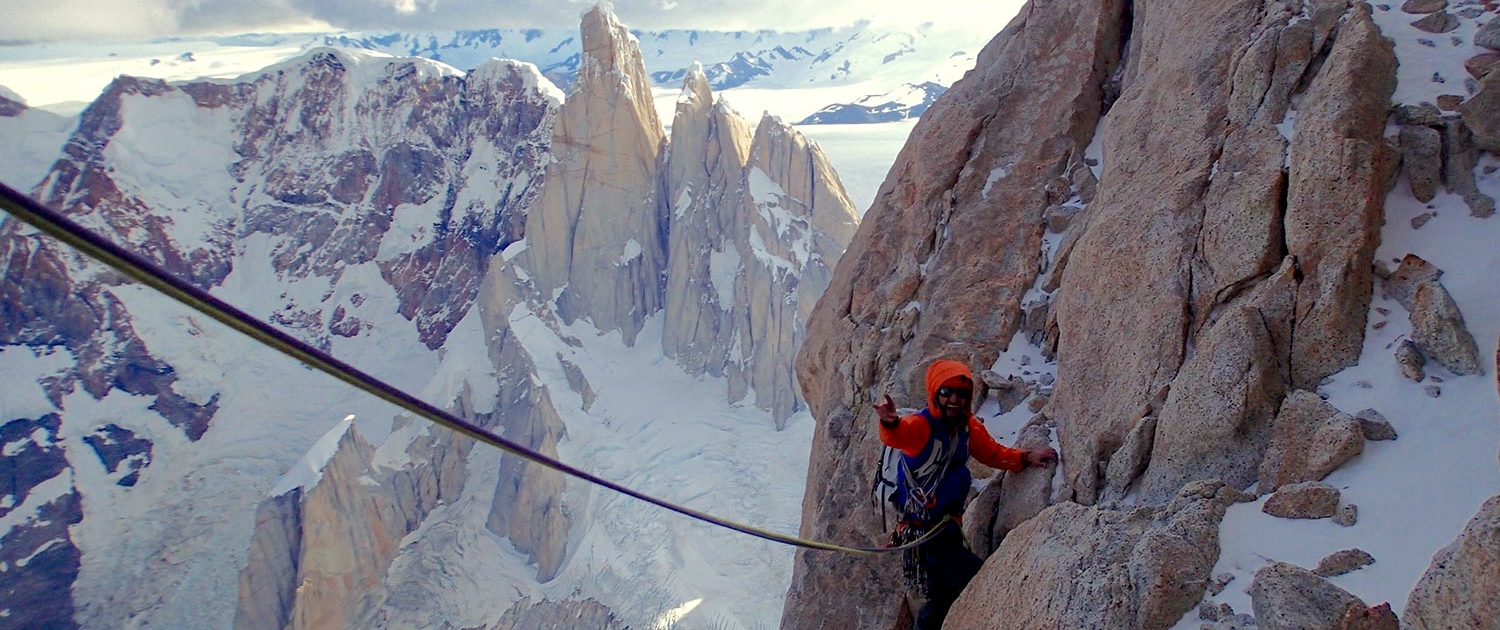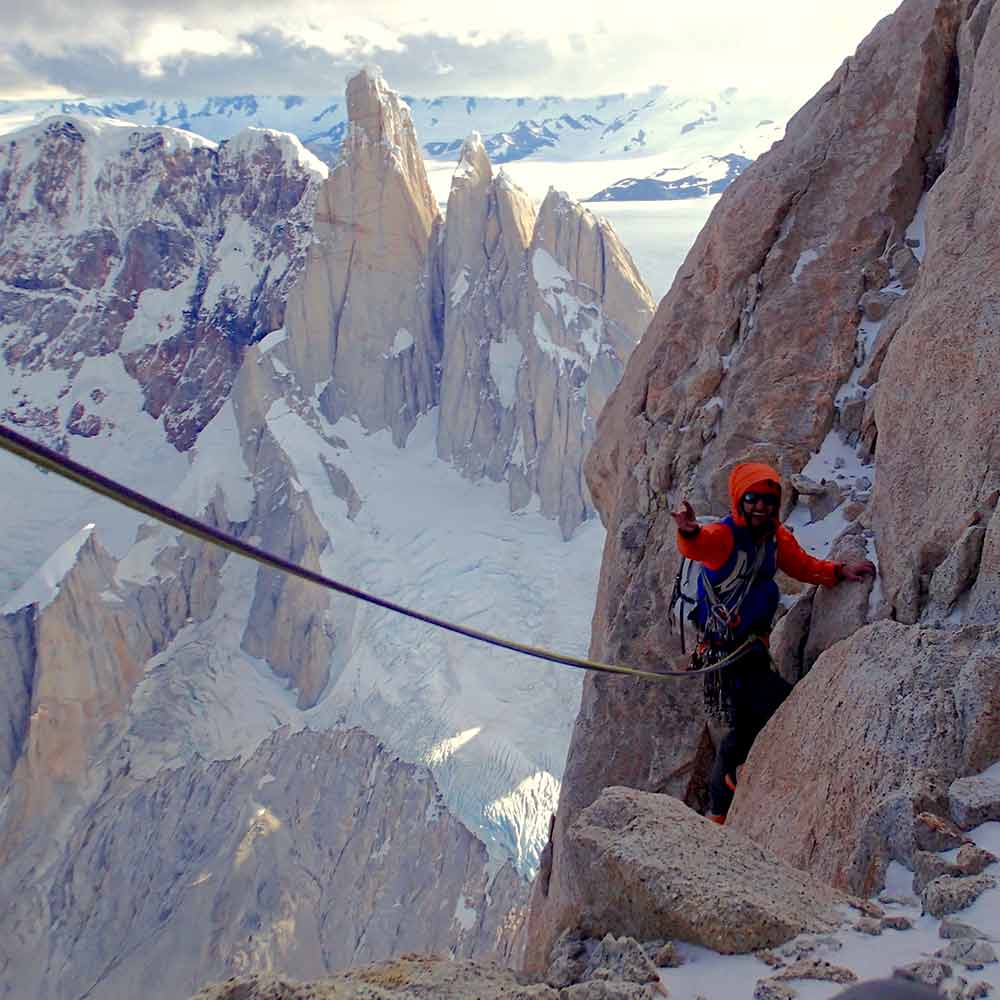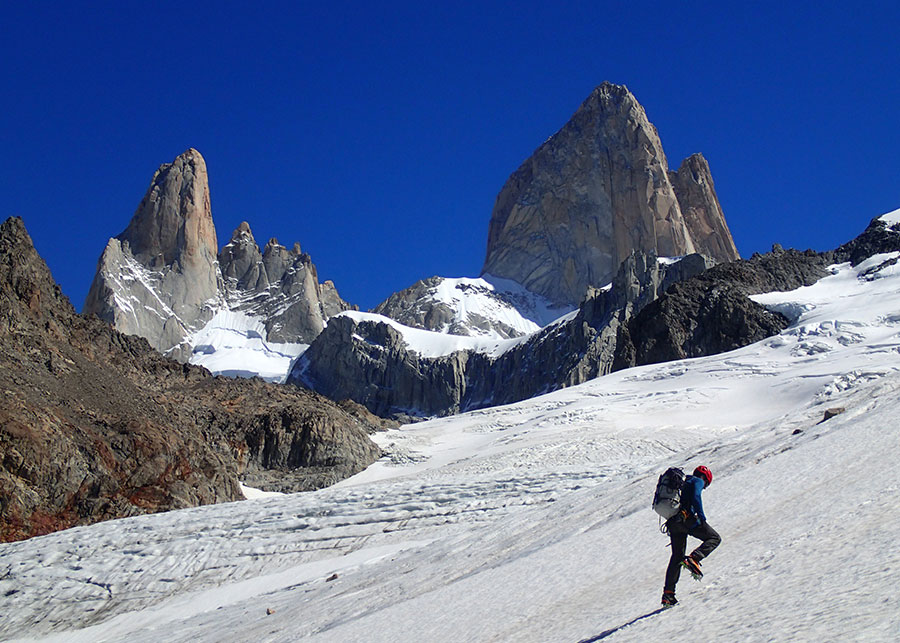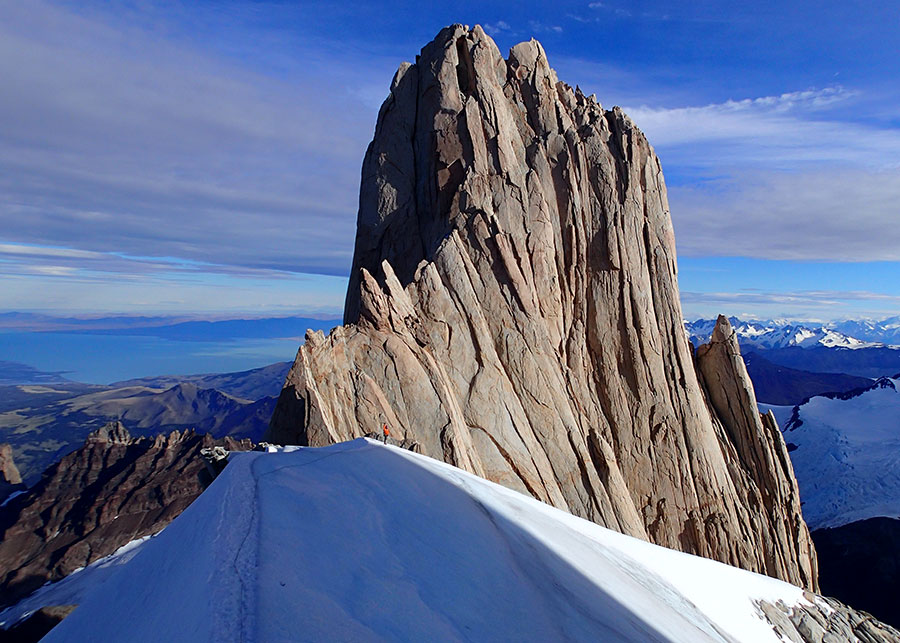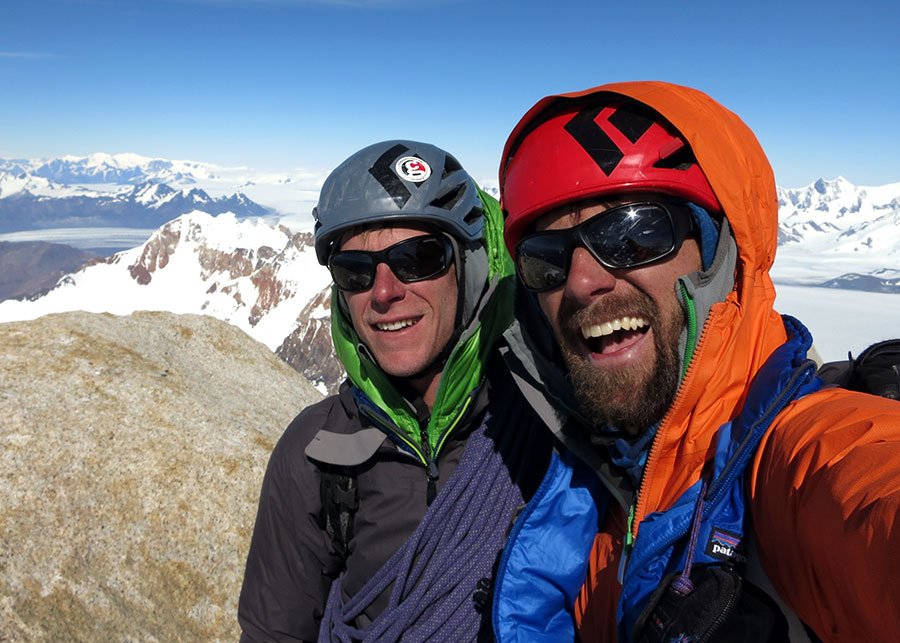The night inched along, and the dark visions polluting my brain were challenged only by the constant, deafening whir of nylon in the wind.
I drifted off for seconds, minutes—all-too-brief respites from the reality of the situation. But it was never long before I snapped awake to the inescapable blackness, and the need to readjust on my jagged bed of granite. Rob began softly snoring at one point, and I stirred with silent rage, more jealous than anything else. At least there was no precip.
But dawn’s slow chromatic shift revealed my worst fear—it was now snowing. The wind still swirled, and my psyche filled with visions of the perilous descent to come, the bleached tatters of old chopped ropes we had seen on the lower pitches. I rubbed my eyes, swollen and crusty from having left my contact lenses in overnight. White fluff cascaded down and piled around us.
As the contours of my vision sharpened, I began to laugh. Though the wind remained, morning alpenglow stained the Torres orange, and a few faint stars still twinkled as the night bled into morning. The snow was not snow at all. Fitz Roy’s sharp, rough-grained granite had sliced a sizeable gash in Rob’s sleeping bag, and each time he moved, 800-fill down spewed out in cartoon-like plumes. Half a goose worth was now sprinkled over our lofty perch.
Later that morning, the rope contorted in a dramatic arc as the terrain eased and we surfed up and around the ridge’s undulating granite waves under a cloudless sky.
Dehydrated and delirious, we scrambled the blocky, low-angle summit slopes to the top and dropped onto the north side of the mountain, bathed in bright mid-morning sun. The wind disappeared as if someone had shut a door. We stripped off layers, melted snow, and tried to ignore the fact that we were only halfway.
A small bronze casting of the Virgin Mary had been wired to the summit block, and though my religious upbringing had long ago left me disillusioned, I smiled. If there was ever a time to seek the protection of a higher power, the calm moments before rappelling Fitz Roy was it.

